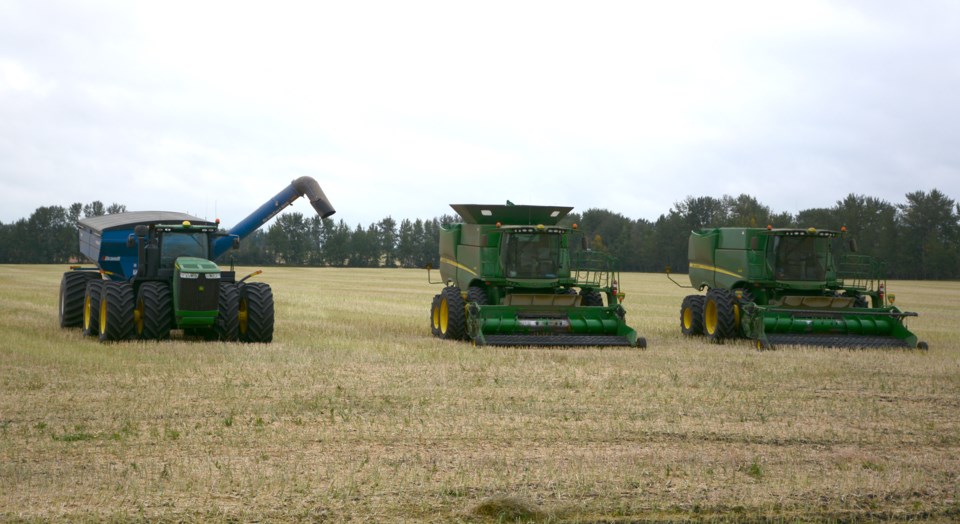WESTLOCK – Westlock County has declared a Municipal State of Agricultural Disaster, with cereals, peas and canola across the municipality meeting “disaster thresholds”, while a lack of pasture, feed, and straw may force some farmers to sell their herds.
Following a recommendation from agriculture and environmental services director Jacolyn Tigert, county councillors voted 6-0 at their Sept. 14 meeting to declare a state of agricultural disaster for 2021, joining neighbouring municipalities like Athabasca County and Sturgeon County. Declaring a municipal state of disaster is a blanket declaration for crops, livestock and forages to create awareness and doesn’t automatically qualify the municipality, or its farmers, for any additional provincial or federal funding. Tigert did note the province and feds have already allocated $340 million for help, aimed mainly at cattle producers.
“I’ve spoken to many of our producers and the pasture and hay and feed for next year are all in serious trouble. Some folks are baling crops so that they have feed — we did have a bit of a hailstorm and adjusters were called out and they said they didn’t have much crop left so they might as well bail it for feed,” said Tigert.
“The province and federal government have already implemented their programs so this is just a follow through which shows support to our agricultural producers.”
Councillors said that while some farmers are reporting decent crops, depending on the location and what’s being grown, cattle producers are taking it on the chin. And while recent rains may help for next year, Tigert said “it won’t affect this year’s yield or pastures.”
“The people I’ve talked to, the crops aren’t that bad considering that yes, yields may be down somewhat in some places more than others. But the return, because of the higher dollar-value of the crop, means they’ll do as well, or better than usual,” said Coun. Dennis Primeau. “The producers who are in trouble are the cattle guys because hay crops were small, pastures were bad and the federal and provincial programs work out to like $200 (per head) which really doesn’t go very far.”
In her RFD to council, Tigert noted that cereals, peas and canola met “definite disaster thresholds” — both peas and canola had stopped growing and pods were not filling. Hay crops were also ranked “definite disaster” with yields down by a third. Meanwhile, cereals, legumes, hay crops and pastures will recover very little, if at all, even with adequate rain, while her RFD notes that a lack of pasture, feed, and straw “will force many producers to sell livestock herds.”
Added deputy reeve Brian Coleman: “Talking to farmers I’m hearing the same thing as Coun. Primeau. A lot of the crops are actually turning out better than what people had thought. But I support this resolution based on the fact that the people raising cattle need this support.”
Tigert said they used the 12-page Rural Municipalities of Alberta Guide For Declaring Municipal Agricultural Disasters to direct their decision-making process, as well as crop data available through the Agriculture Financial Services Corporation, discussions with farmers and visual inspections by county staff.
The guide, which was developed in collaboration with Alberta Agriculture and Forestry and AFSC, is “intended to promote a consistent mechanism for data collection and monitoring to support municipal decision making and to guide the communication process when considering agricultural disaster declarations.”
Ultimately, the guide states that if 25 to 50 per cent of crops are rated poor that’s a “pending disaster”, while a “definite disaster” is when more than 50 per cent of crops are poor. When Tigert first discussed the declaration with council back in August, 25 to 50 per cent of local crops were rated ‘poor.’



